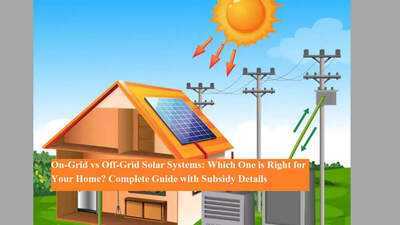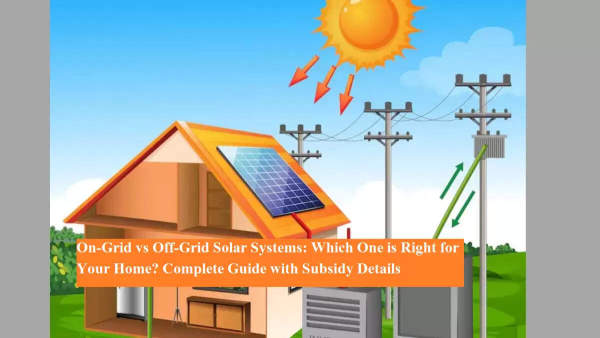

New Delhi, June 24, 2025 — As India moves steadily toward sustainable energy, solar power adoption is booming across urban and rural regions alike. From rising electricity bills to unreliable power supply in remote areas, there are several reasons why more households are considering solar energy solutions. However, one crucial decision every homeowner faces is: Should you choose an On-Grid, Off-Grid, or Hybrid Solar System?
This article breaks down the key differences between these systems, where each works best, and how much government subsidy you can expect under current schemes.
⚡ What Is an On-Grid Solar System?An On-Grid Solar System is directly connected to the electricity grid. Any surplus electricity generated by your solar panels is exported to the grid, which earns you credits or reduces your electricity bill under Net Metering policies.
Key Features:
Works best in cities with consistent power supply
No need for battery storage, reducing overall cost
Great for saving on monthly electricity bills
Ideal for urban areas like Delhi, Mumbai, Bengaluru, and Pune
Best For: Tier-1 and Tier-2 cities with reliable grid connectivity
🔋 What Is an Off-Grid Solar System?An Off-Grid Solar System operates independently of the main power grid. It uses batteries to store solar energy, which can then be used when sunlight isn't available, such as during the night or cloudy days.
Key Features:
Not connected to any grid; fully self-sufficient
Comes with battery backup to store power
Perfect for regions with frequent power cuts or no electricity access
Slightly more expensive due to battery costs
Best For: Remote villages, hilly terrain, tribal regions, and forested areas
⚡🔋 What Is a Hybrid Solar System?A Hybrid Solar System combines the benefits of both on-grid and off-grid systems. It uses batteries to store power for emergencies but can also feed surplus electricity to the grid.
Key Features:
Dual functionality: energy independence + grid support
Ideal for semi-urban areas with unstable power supply
Offers flexibility and backup during outages
Best For: Areas with erratic electricity supply
🏠 Which System Is Right for Your Home?Here’s a simple guide based on your location:
Location Recommended System| Metro cities (e.g., Delhi, Mumbai) | On-Grid System |
| Remote and rural regions | Off-Grid System |
| Semi-urban/unstable power areas | Hybrid System |
Thanks to initiatives like the PM-KUSUM Scheme and the Surya Ghar Yojana, the government is offering attractive subsidies on all types of residential rooftop solar systems.
💸 How Much Subsidy Can You Get?The subsidy amount depends on your monthly electricity consumption and the capacity of the rooftop solar plant you install.
Monthly Power Usage (Units) Recommended Solar Capacity Subsidy Offered (INR)| 0 – 150 units | 1 – 2 kW | ₹30,000 to ₹60,000 |
| 150 – 300 units | 2 – 3 kW | ₹60,000 to ₹78,000 |
| Above 300 units | More than 3 kW | Up to ₹78,000 (Maximum) |
These subsidies help reduce the upfront cost of installation and promote clean energy adoption in Indian homes.
🌞 Why Go Solar Now?Save on electricity bills in the long term
Reduce carbon footprint and support green energy
Earn through net metering if you generate surplus power
Government subsidies make it more affordable than ever
Whether you're living in a bustling metro or a quiet rural town, there’s a solar system that fits your needs. With government-backed subsidies and improving technology, there’s never been a better time to go solar. Choose the right system based on your location and power needs — and turn your rooftop into a smart energy solution.